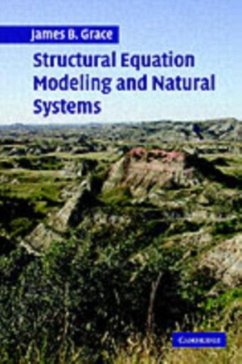This book, first published in 2006, presents an introduction to the methodology of structural equation modeling, illustrates its use, and goes on to argue that it has revolutionary implications for the study of natural systems. A major theme of this book is that we have, up to this point, attempted to study systems primarily using methods (such as the univariate model) that were designed only for considering individual processes. Understanding systems requires the capacity to examine simultaneous influences and responses. Structural equation modeling (SEM) has such capabilities. It also possesses many other traits that add strength to its utility as a means of making scientific progress. In light of the capabilities of SEM, it can be argued that much of ecological theory is currently locked in an immature state that impairs its relevance. It is further argued that the principles of SEM are capable of leading to the development and evaluation of multivariate theories of the sort vitally needed for the conservation of natural systems.
Dieser Download kann aus rechtlichen Gründen nur mit Rechnungsadresse in A, B, BG, CY, CZ, D, DK, EW, E, FIN, F, GR, HR, H, IRL, I, LT, L, LR, M, NL, PL, P, R, S, SLO, SK ausgeliefert werden.


